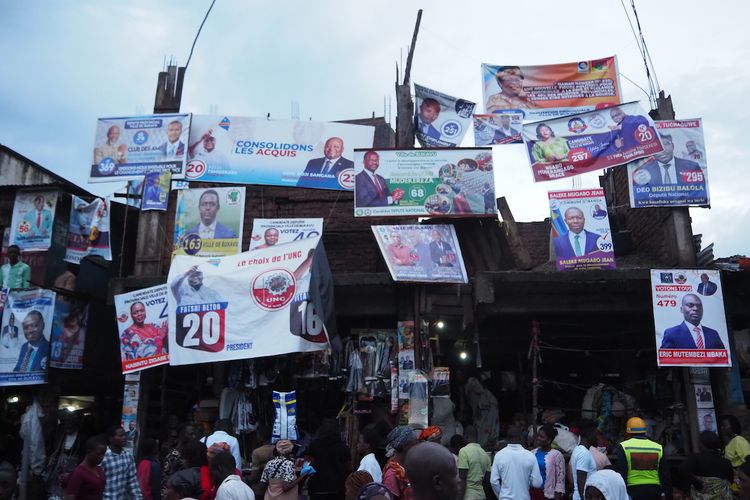This essay was written by Leo Porte, who works on the assessment of the humanitarian needs in the Eastern part of the DRC and is based in the Kivu provinces since 2022.
Read his other essays from here and here.
On the 31st of December 2023, Felix Tshisekedi was reelected President of the Democratic Republic of Congo, following months of uncertainties on the feasibility of the campaign. The election period wasn’t only original in its scale – 43,000,000 voters for 75,000 vote places across 2 million kilometer scare – but also because it combined all national, legislative, provincial and municipal elections at once, raising the number of competing candidates to 100,000.
The official electoral period campaign, or “propaganda period” as many like to call it, controlled by the Independent National Electoral Commission (Ceni), started on the 19th of November and ended on the 18th of December, two days before the poll.
During that month, the urban landscape of major cities was overrun – both visually and audibly — by competing parties, in a great show of ingenuity to occupy every possible inch of the public space with their faces and candidate numbers.
The following pictures offer a small glimpse of this unprecedented electoral campaign through the visual metamorphosis of Bukavu, capital of the South-Kivu province in the Eastern part of the country and home to an estimated 1.3 million people.
Important disparities in resources can be seen depending on the type of election candidates are running for. Presidential candidates – like the current president Felix Tshisekedi — tend to appear on a larger variety of visual displays, which are bigger in scale and of better quality, in stark contrast to the small posters most provincial candidates are limited to.
Various candidates surrounding a more common add poster of a church service.
Bukavu deserves better.
Save the nation or die.

Entrance of the city center main market.
City main avenue.
Dominating the public space of a city with faces, numbers and logos of parties is obviously a strategic goal in campaigns everywhere. However, despite having the highest hydroelectric potential of the continent, only 21.5% of the population has access to electricity. Therefore, the main electoral battle doesn’t take place on TV screens but on the streets.
City main square.
Taxi station.
Rickshaw drivers’ fav.
Cycled poster.
Land cruiser candidate number 3 edition.
Campaign truck.
157 multiplications.
Parade of a candidate – Copies and the original.
Cape and shirts – backs parade.
Drunkers dancing in praise of a candidate with her stickers on faces.
Candidate irruption during a boxing match main event.
The “propaganda period” can have a certain impact on the city’s economic activities. Not only is every possible poster spot rented and streets filled with free clothes portraying the candidates, but people can also earn money when participating in candidate’s public marches.
Various candidates competing for the front of a taxi bike.
Bucket of a kid selling sodas.
Stickers in a hair salon.
Flaglet on bike mirror.
Watches and bracelets seller’s box.
Chapati vendor’s umbrella.
At a beer depot.
109 scarf.
Crowd.
Winners smile.
Despite the election results being strongly contested by the opposition, after an electoral process called a “gigantic organized disorder” by the country Catholic church – a key institution in the country political history – the formidable amount of candidates and their efforts are at least showing wrong the words of former dictator Mobutu who used to say that “democracy is not for Africa”.







